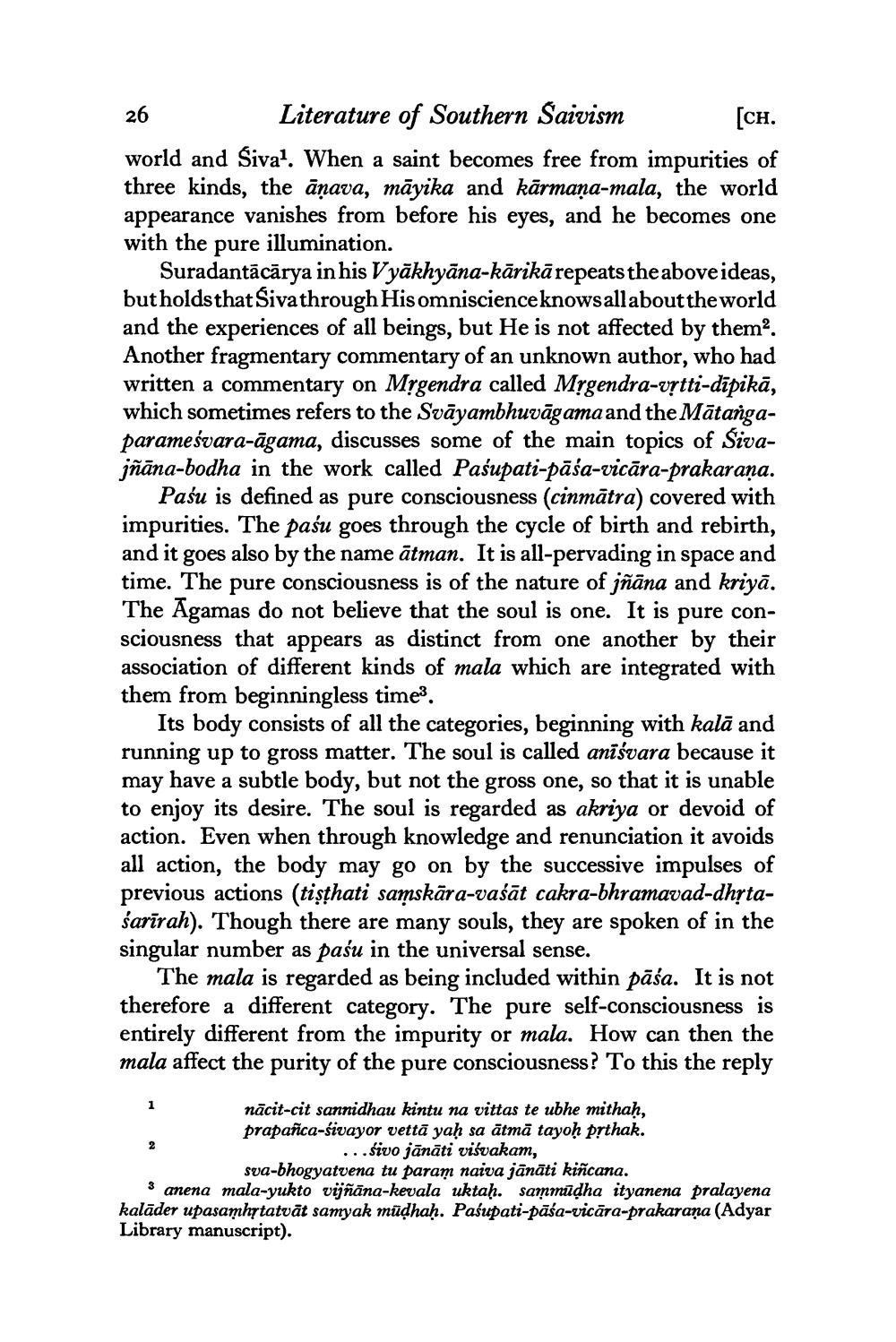________________
26
Literature of Southern Saivism
[ch. world and Siva'. When a saint becomes free from impurities of three kinds, the āņava, māyika and kārmana-mala, the world appearance vanishes from before his eyes, and he becomes one with the pure illumination.
Suradantācārya in his Vyākhyāna-kārikā repeats the above ideas, but holds that Sivathrough His omniscience knows allabout the world and the experiences of all beings, but He is not affected by them? Another fragmentary commentary of an unknown author, who had written a commentary on Mygendra called Mrgendra-vrtti-dīpikā, which sometimes refers to the Svāyambhuvāgama and the Mātangaparameśvara-āgama, discusses some of the main topics of Sivajñāna-bodha in the work called Pasupati-pāśa-vicāra-prakarana.
Pašu is defined as pure consciousness (cinmātra) covered with impurities. The pašu goes through the cycle of birth and rebirth, and it goes also by the name ātman. It is all-pervading in space and time. The pure consciousness is of the nature of jñāna and kriyā. The Agamas do not believe that the soul is one. It is pure consciousness that appears as distinct from one another by their association of different kinds of mala which are integrated with them from beginningless time.
Its body consists of all the categories, beginning with kalā and running up to gross matter. The soul is called aniśvara because it may have a subtle body, but not the gross one, so that it is unable to enjoy its desire. The soul is regarded as akriya or devoid of action. Even when through knowledge and renunciation it avoids all action, the body may go on by the successive impulses of previous actions (tişțhati samskāra-vaśāt cakra-bhramavad-dhịtaśarīrah). Though there are many souls, they are spoken of in the singular number as pašu in the universal sense.
The mala is regarded as being included within pāśa. It is not therefore a different category. The pure self-consciousness is entirely different from the impurity or mala. How can then the mala affect the purity of the pure consciousness? To this the reply
nācit-cit sannidhau kintu na vittas te ubhe mithaḥ, prapañca-śivayor vettä yaḥ sa ātmā tayoḥ prthak.
...śivo jānāti višvakam, sva-bhogyatvena tu param naiva jānāti kiñcana. * anena mala-yukto vijñāna-kevala uktah. sammūdha ityanena pralayena kalāder upasamhytatvāt samyak müdhaḥ. Pasupati-pāśa-vicāra-prakarana (Adyar Library manuscript).




